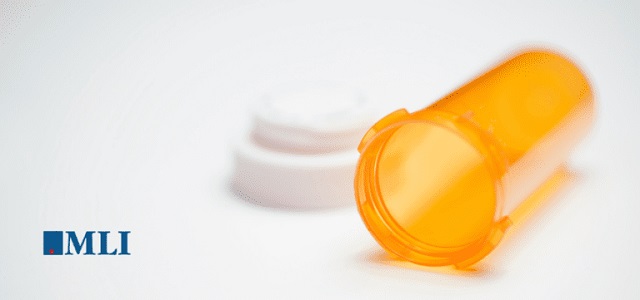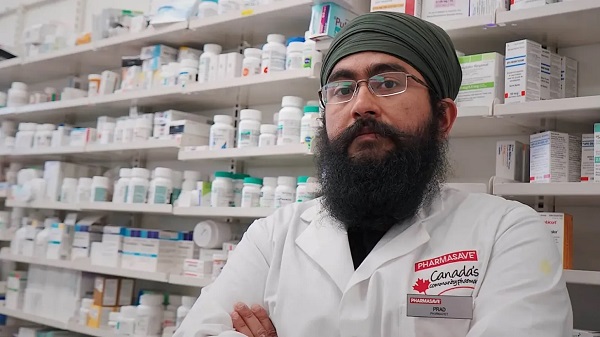Health
National pharmacare – might it be a pig in a poke?

From the Macdonald Laurier Institute
By Nigel Rawson and John Adams for Inside Policy
No Canadian should have to choose between paying for medicines and paying for rent or food. National pharmacare has been proposed as a remedy to this situation.
“When will Canada have national pharmacare?” asks the author of a recent article in the British Medical Journal (BMJ). Better questions are: will Canadian pharmacare be the system many Canadians hope for? Or, might it turn out to be skimpy coverage akin to minimum wage laws?
In its 2024 budget document, the federal government proposed providing $1.5 billion over five years to support the launch of national pharmacare for “universal, single-payer coverage for a number of contraception and diabetes medications.” This has been hailed as a “big day for pharmacare” by some labour unions, patients and others, including the author of the BMJ article who said that national pharmacare should be expanded to cover all medication needs beginning with the most commonly-prescribed, clinically-important “essential medicines.”
In its budget, the government stated “coverage of contraceptives will mean that nine million women in Canada will have better access to contraception” and “improving access to diabetes medications will help improve the health of 3.7 million Canadians with diabetes.” Why not salute such affable, motherhood and apple pie, sentiments? The devil is in the details.
The plan does not cover new drugs for diabetes, such as Ozempic, Rybelsus, Wegovy, Mounjaro or Zepbound, all based on innovative GLP-1 agonists, where evidence is building for cardiovascular and weight loss benefits. This limited rollout seems based on cheap, older medicines, which can be less effective for some with diabetes.
The federal government has also consistently under-estimated the cost of national proposals such as pharmacare – not to mention other promises. In their 2019 election platform, the Liberals promised $6 billion for national pharmacare (the NDP promised $10 billion). Keen analysis shows that even these expansive amounts would be woefully inadequate to fund a full national pharmacare plan. This makes the $300 million a year actually proposed by the Liberals’ look like the skimpy window-dressing that it is.
National pharmacare, based on the most comprehensive existing public drug plan (Quebec’s), would cost much more. In 2017, using optimistic assumptions, the Parliamentary Budget Officer (PBO) estimated the cost for a national plan based on Quebec’s experience to be $19.3 billion a year. With more appropriate assumptions, the Canadian Health Policy Institute estimated $26.2 billion. In June 2019, the federal government’s own Advisory Council on the Implementation of National Pharmacare put the cost at $40 billion, while a few months later, the tax consulting company RSM Canada projected $48.3 to $52.5 billion per year. Five years later, costs no doubt have soared.
Even with these staggering cost a program based on matching Quebec’s drug plan at the national level would fail to provide anywhere near the level of coverage already provided to the almost two-thirds of Canadians who have private drug insurance, including many in unionized jobs. Are they willing to sacrifice their superior coverage, especially of innovative brand-name medicines, for a program covering only “essential medicines”? Put another way, are Canadians and their unions prepared to settle for the equivalent of a minimum wage or minimum benefits?
The PBO has estimated the cost of coverage of a range of contraceptives and diabetes medicines as $1.9 billion over five years, which is more than the $1.5 billion provided in the budget. However, this figure is based on an assumption that the new program would only cover Canadians who currently do not have public or private drug plan insurance, those who currently do not fill their prescriptions due to cost related reasons, and the out-of-pocket part of prescription costs for Canadians who have public or private drug plan coverage. This is major guesswork because existing public and private drug plans may see the new federal program as an opportunity to reduce their costs by requiring their beneficiaries to use the new program. If this occurs, the national pharmacare costs to the federal government, even for the limited role out of diabetes and contraceptives, would soar to an estimated $5.7 billion, according to the PBO.
Our governments are not known for accurate estimates of the costs of new programs. One has only to remember the Phoenix pay system and the ArriveCAN costs. In 2017, the Government of Ontario estimated $465 million per year to extend drug coverage to every resident under the age of 25 years. What happened? Introduced in 2018, prescriptions rose by 290% and drug expenditure increased to $839 million – almost double the guesstimate. In 2019, the provincial government back peddled and modified the program to cover only people not already insured by a private plan.
Although we believe governments should facilitate access to necessary medicines for Canadians who cannot afford their medicines, this does not require national pharmacare and a growing bureaucracy. Exempting lower-income Canadians from copayments and premiums required by provincial programs, as British Columbia has done, and removing the requirement to pay for all drugs up to a deductible would allow these Canadians access sooner, more simply, and more effectively.
Moreover, it isn’t just lower-income Canadians who want help with unmet medicine needs. Canadians who need access to drugs for diseases that are difficult to treat and can cost hundreds of thousands of dollars per year also require assistance. Few Canadians whether they have low, medium or high incomes can afford these prices without government or private insurance. Private insurers often refuse to cover these drugs.
The Liberals provided a separate $1.5 billion over three years for drugs for rare disorders, but no province or territory has signed a bilateral agreement with the federal government for these drugs and no patient has received benefit through this program. Even if they did, the $500 million per year would not go far towards the actual costs. There is at least a zero missing in the federal contribution, as the projected cost of public spending on rare disease medicines by 2025 is more than threefold what Ottawa has budgeted.
Expensive drugs for cancer and rare disorders are just as essential as basic medicines for cardiovascular diseases, diabetes, birth control, and many other common conditions. If a costly medicine will allow a person with a life-shortening disease to live longer or one with a disorder that will be severely disabling left untreated to have an improved quality of life and be a productive taxpayer, it too should be regarded as essential.
The Liberals and NDP are working to stampede the bill to introduce the pharmacare program (Bill C-64) through the legislative process. This includes inviting witnesses over the first long weekend of summer, when many Canadians are away, to appear before the parliamentary Standing Committee on Health three days later.
Too much is unknown about what will be covered (will newer drugs be covered or only older, cheaper medicines?), who will be eligible for coverage (all appropriate Canadians regardless of existing coverage or only those with no present coverage?), and what the real cost will be, including whether a new program focusing on older, cheaper drugs will deter drug developers from launching novel medicines for unmet needs in Canada.
This Bill as it stands is such a power grab that, if passed, the federal Health Minister never has to come back to Parliament for review, oversight or another tranche of legal authority, it would empower the Cabinet to make rules and regulations without parliamentary scrutiny.
A lot is at stake for Canadians, especially for patients and their doctors. Prescription medicines are of critical importance to treating many diseases. National pharmacare must not only allow low-income residents to access purported “essential medicines” but also ensure that patients who need specialized drugs, especially higher-cost innovative cell and genetic therapies that may be the only effective treatment for their disorder, are not ignored. Canadians should be careful what they wish for. They may receive less than they anticipate, and, in fact, many Canadians may be worse off despite the increase in public spending. Time to look under the hood and kick the tires.
Nigel Rawson is a senior fellow with the Macdonald-Laurier Institute.
John Adams is co-founder and CEO of Canadian PKU and Allied Disorders Inc., a senior fellow with the Macdonald-Laurier Institute and volunteer board chair of Best Medicines Coalition.
armed forces
Yet another struggling soldier says Veteran Affairs Canada offered him euthanasia

From LifeSiteNews
‘It made me wonder, were they really there to help us, or slowly groom us to say ‘here’s a solution, just kill yourself.’
Yet another Canadian combat veteran has come forward to reveal that when he sought help, he was instead offered euthanasia.
David Baltzer, who served two tours in Afghanistan with the Princess Patricia’s Canadian Light Infantry, revealed to the Toronto Sun that he was offered euthanasia on December 23, 2019—making him, as the Sun noted, “among the first Canadian soldiers offered therapeutic suicide by the federal government.”
Baltzer had been having a disagreement with his existing caseworker, when assisted suicide was brought up in in call with a different agent from Veteran Affairs Canada.
“It made me wonder, were they really there to help us, or slowly groom us to say ‘here’s a solution, just kill yourself,” Baltzer told the Sun.“I was in my lowest down point, it was just before Christmas. He says to me, ‘I would like to make a suggestion for you. Keep an open mind, think about it, you’ve tried all this and nothing seems to be working, but have you thought about medical-assisted suicide?’”
Baltzer was stunned. “It just seems to me that they just want us to be like ‘f–k this, I give up, this sucks, I’d rather just take my own life,’” he said. “That’s how I honestly felt.”
Baltzer, who is from St. Catharines, Ontario, joined up at age 17, and moved to Manitoba to join the Princess Patricia’s Canadian Light Infantry, one of Canada’s elite units. He headed to Afghanistan in 2006. The Sun noted that he “was among Canada’s first troops deployed to Afghanistan as part Operation Athena, where he served two tours and saw plenty of combat.”
“We went out on long-range patrols trying to find the Taliban, and that’s exactly what we did,” Baltzer said. “The best way I can describe it, it was like Black Hawk Down — all of the sudden the s–t hit the fan and I was like ‘wow, we’re fighting, who would have thought? Canada hasn’t fought like this since the Korean War.”
After returning from Afghanistan, Baltzer says he was offered counselling by Veteran Affairs Canada, but it “was of little help,” and he began to self-medicate for his trauma through substance abuse (he noted that he is, thankfully, doing well today). Baltzer’s story is part of a growing scandal. As the Sun reported:
A key figure shedding light on the VAC MAID scandal was CAF veteran Mark Meincke, whose trauma-recovery podcast Operation Tango Romeo broke the story. ‘Veterans, especially combat veterans, usually don’t reach out for help until like a year longer than they should’ve,’ Meincke said, telling the Sun he waited over two decades before seeking help.
‘We’re desperate by the time we put our hands up for help. Offering MAID is like throwing a cinderblock instead of a life preserver.’ Meincke said Baltzer’s story shoots down VAC’s assertions blaming one caseworker for offering MAID to veterans, and suggests the problem is far more serious than some rogue public servant.
‘It had to have been policy. because it’s just too many people in too many provinces,” Meincke told the Sun. “Every province has service agents from that province.’
Veterans Affairs Canada claimed in 2022 that between four and 20 veterans had been offered assisted suicide; Meincke “personally knows of five, and said the actual number’s likely close to 20.” In a previous investigation, VAC claimed that only one caseworker was responsible—at least for the four confirmed cases—and that the person “was lo longer employed with VAC.” Baltzer says VAC should have military vets as caseworkers, rather than civilians who can’t understand what vets have been through.
To date, no federal party leader has referenced Canada’s ongoing euthanasia scandals during the 2025 election campaign.
2025 Federal Election
Study links B.C.’s drug policies to more overdoses, but researchers urge caution

By Alexandra Keeler
A study links B.C.’s safer supply and decriminalization to more opioid hospitalizations, but experts note its limitations
A new study says B.C.’s safer supply and decriminalization policies may have failed to reduce overdoses. Furthermore, the very policies designed to help drug users may have actually increased hospitalizations.
“Neither the safer opioid supply policy nor the decriminalization of drug possession appeared to mitigate the opioid crisis, and both were associated with an increase in opioid overdose hospitalizations,” the study says.
The study has sparked debate, with some pointing to it as proof that B.C.’s drug policies failed. Others have questioned the study’s methodology and conclusions.
“The question we want to know the answer to [but cannot] is how many opioid hospitalizations would have occurred had the policy not have been implemented,” said Michael Wallace, a biostatistician and associate professor at the University of Waterloo.
“We can never come up with truly definitive conclusions in cases such as this, no matter what data we have, short of being able to magically duplicate B.C.”
Jumping to conclusions
B.C.’s controversial safer supply policies provide drug users with prescription opioids as an alternative to toxic street drugs. Its decriminalization policy permitted drug users to possess otherwise illegal substances for personal use.
The peer-reviewed study was led by health economist Hai Nguyen and conducted by researchers from Memorial University in Newfoundland, the University of Manitoba and Weill Cornell Medicine, a medical school in New York City. It was published in the medical journal JAMA Health Forum on March 21.
The researchers used a statistical method to create a “synthetic” comparison group, since there is no ideal control group. The researchers then compared B.C. to other provinces to assess the impact of certain drug policies.
Examining data from 2016 to 2023, the study links B.C.’s safer supply policies to a 33 per cent rise in opioid hospitalizations.
The study says the province’s decriminalization policies further drove up hospitalizations by 58 per cent.
“Neither the safer supply policy nor the subsequent decriminalization of drug possession appeared to alleviate the opioid crisis,” the study concludes. “Instead, both were associated with an increase in opioid overdose hospitalizations.”
The B.C. government rolled back decriminalization in April 2024 in response to widespread concerns over public drug use. This February, the province also officially acknowledged that diversion of safer supply drugs does occur.
The study did not conclusively determine whether the increase in hospital visits was due to diverted safer supply opioids, the toxic illicit supply, or other factors.
“There was insufficient evidence to conclusively attribute an increase in opioid overdose deaths to these policy changes,” the study says.
Nguyen’s team had published an earlier, 2024 study in JAMA Internal Medicine that also linked safer supply to increased hospitalizations. However, it failed to control for key confounders such as employment rates and naloxone access. Their 2025 study better accounts for these variables using the synthetic comparison group method.
The study’s authors did not respond to Canadian Affairs’ requests for comment.
Subscribe for free to get BTN’s latest news and analysis – or donate to our investigative journalism fund.
Correlation vs. causation
Chris Perlman, a health data and addiction expert at the University of Waterloo, says more studies are needed.
He believes the findings are weak, as they show correlation but not causation.
“The study provides a small signal that the rates of hospitalization have changed, but I wouldn’t conclude that it can be solely attributed to the safer supply and decrim[inalization] policy decisions,” said Perlman.
He also noted the rise in hospitalizations doesn’t necessarily mean more overdoses. Rather, more people may be reaching hospitals in time for treatment.
“Given that the [overdose] rate may have gone down, I wonder if we’re simply seeing an effect where more persons survive an overdose and actually receive treatment in hospital where they would have died in the pre-policy time period,” he said.
The Nguyen study acknowledges this possibility.
“The observed increase in opioid hospitalizations, without a corresponding increase in opioid deaths, may reflect greater willingness to seek medical assistance because decriminalization could reduce the stigma associated with drug use,” it says.
“However, it is also possible that reduced stigma and removal of criminal penalties facilitated the diversion of safer opioids, contributing to increased hospitalizations.”
Karen Urbanoski, an associate professor in the Public Health and Social Policy department at the University of Victoria, is more critical.
“The [study’s] findings do not warrant the conclusion that these policies are causally associated with increased hospitalization or overdose,” said Urbanoski, who also holds the Canada Research Chair in Substance Use, Addictions and Health Services.
Her team published a study in November 2023 that measured safer supply’s impact on mortality and acute care visits. It found safer supply opioids did reduce overdose deaths.
Critics, however, raised concerns that her study misrepresented its underlying data and showed no statistically significant reduction in deaths after accounting for confounding factors.
The Nguyen study differs from Urbanoski’s. While Urbanoski’s team focused on individual-level outcomes, the Nguyen study analyzed broader, population-level effects, including diversion.
Wallace, the biostatistician, agrees more individual-level data could strengthen analysis, but does not believe it undermines the study’s conclusions. Wallace thinks the researchers did their best with the available data they had.
“We do not have a ‘copy’ of B.C. where the policies weren’t implemented to compare with,” said Wallace.
B.C.’s overdose rate of 775 per 100,000 is well above the national average of 533.
Elenore Sturko, a Conservative MLA for Surrey-Cloverdale, has been a vocal critic of B.C.’s decriminalization and safer supply policies.
“If the government doesn’t want to believe this study, well then I invite them to do a similar study,” she told reporters on March 27.
“Show us the evidence that they have failed to show us since 2020,” she added, referring to the year B.C. implemented safer supply.
This article was produced through the Breaking Needles Fellowship Program, which provided a grant to Canadian Affairs, a digital media outlet, to fund journalism exploring addiction and crime in Canada. Articles produced through the Fellowship are co-published by Break The Needle and Canadian Affairs.
Our content is always free – but if you want to help us commission more high-quality journalism,
consider getting a voluntary paid subscription.
-

 2025 Federal Election2 days ago
2025 Federal Election2 days agoStudy links B.C.’s drug policies to more overdoses, but researchers urge caution
-

 2025 Federal Election2 days ago
2025 Federal Election2 days agoCarney’s Hidden Climate Finance Agenda
-

 Business2 days ago
Business2 days agoIs Government Inflation Reporting Accurate?
-

 2025 Federal Election2 days ago
2025 Federal Election2 days agoWhen it comes to pipelines, Carney’s words flow both ways
-

 2025 Federal Election2 days ago
2025 Federal Election2 days agoPolls say Canadians will give Trump what he wants, a Carney victory.
-

 2025 Federal Election1 day ago
2025 Federal Election1 day agoThe Anhui Convergence: Chinese United Front Network Surfaces in Australian and Canadian Elections
-

 2025 Federal Election19 hours ago
2025 Federal Election19 hours agoPoilievre Campaigning To Build A Canadian Economic Fortress
-

 Automotive18 hours ago
Automotive18 hours agoCanadians’ Interest in Buying an EV Falls for Third Year in a Row








